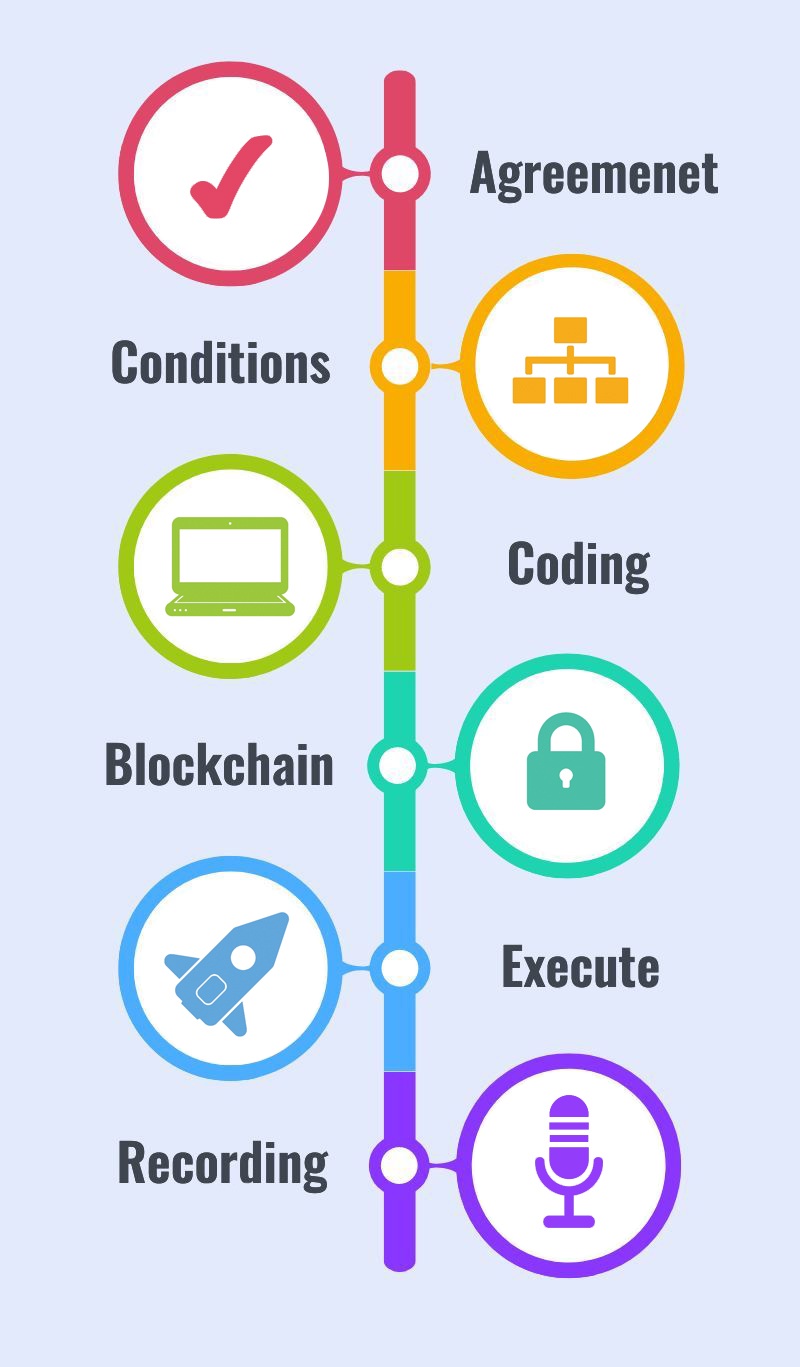
Smart contracts are an emerging technology that completely changed the world of digital transactions. They are self-executing agreements that allow users to exchange value without a middleman or intermediary. Smart contract platforms are secure, decentralized networks that provide a platform for developers to create and deploy their smart contracts and distributed applications (DApps). They are quickly becoming a popular way to streamline otherwise laborious digital transactions.
What is the first smart contract platform?
The first smart contract platform is Ethereum which popularized the concept of smart contracts. Vitalik Buterin a cryptocurrency researcher and programmer first described it in a white paper he published in 2013. After that Buterin and a team of developers launched the Ethereum network and the Ethereum Virtual Machine in 2015. Before Ethereum, smart contracts were held to be non-enforceable due to their lack of a centralized control mechanism. With Ethereum, smart contracts are enforced and enforced automatically, meaning that a programmer or user who sets up the smart contract can be assured of its execution, without having to worry about the strength of the enforcement mechanisms. If you don’t know how to set up a smart contract you can hire a freelance blockchain developer to guide you.
What are smart contracts?
Like any type of contract, smart contracts clarify the terms of interaction and transaction. Like real-world contracts, where people agree to do different things, and if the conditions are met, a contract is executed. In the blockchain and virtual world, there is also such a process for smart contracts. A smart contract is simply a program stored on a blockchain that includes a set of pre-defined actions. When the conditions required for the execution of the smart contract are met, this contract will automatically start and be executed without any intermediary’s involvement.
How do smart contracts work?
You can think of a smart contract as a boolean condition between two or more groups, If the conditions are met the contract is considered completed.
Let’s start with an example, Consider John has a bicycle repair shop and he needs a banner designed for his shop, He should find someone who does photoshop services for him. Let’s say he finds a freelancer who does that with $50 in less than a week. They sign a contract between them with the condition of a designed banner being delivered in less than one week at the cost of $50. As soon as the freelancer designs the banner and delivers the output to John, $50 will be automatically released. Although if John fails to deliver that banner in time the contract will be canceled and $50 will be refunded to John.

The above case was a simple example to understand the smart contract logic. The smart contract offers the potential to replace a variety of existing governmental mandates and retail systems. These contracts can enable direct P2P and B2B transactions which are performed by unchangeable code which is designed to deliver specific results. This could affect sectors such as finance, healthcare, and retail by allowing for the secure and efficient exchange of assets and services. This could also provide a more efficient and affordable method of trading, to reduce business and individual transaction costs.
As it’s explained in the image below smart contracts are often created with these steps:
- Come to an agreement between two or more groups
- Specify all the conditions of this agreement completion
- Write the code to perform these actions
- Deploy this smart contract on a blockchain platform like Ethereum
- When the conditions are met the code will be executed
- the transaction is recorded on the blockchain just as any other would

What is so important about smart contracts?
Smart contracts can improve trust, reduce costs, and speed up trade and selling procedures. Trust is improved because they are authenticated and validated by a public blockchain, meaning the payment will be transferred automatically when contraction conditions are met and this can not be undone. This eliminates the potential for fraud and significantly reduces the risk and reduces the need for legal intermediaries. And because those intermediaries are removed costs are reduced because there is no need for review and approval of transactions. Finally, processes are performed faster as the conditions, implemented by the smart contract, are self-executing.
What are the important use cases of a smart contract?
1. IoT Automation: Smart contracts can be used to automate manufacturing processes to ensure the quality of various components.
2. Supply Chain Transparency: Smart contracts enable information sharing between the partakers involved in a supply chain, such as suppliers and distributors, to improve overall transparency and trust.
3. Insurance: Automatic performance and fault-tolerant codes can reduce the processing time and resources necessary for insurance claims and payments.
4. Financial services: Smart contracts can be used to facilitate P2P transactions by removing middlemen and their high fees.
5. Real estate: Smart contracts can be used to record and manage rental payments, mortgages, and other transactions related to real estate.
6. Healthcare: Providers can use smart contracts to securely store and transfer patient information.
7. Voting: Smart contracts can be used to verify and store the results of digital voting, ensuring their accuracy and security.
A brief history of smart contracts
The idea of a smart contract was presented in 1994 by Nick Szabo. He believed that normal contracts could be replaced by computer codes and then stored inside a blockchain network to increase security and remove middlemen to reduce risk and cost. This was the start of smart contracts and since then they have become more popular for automating trades. These contracts needed a blockchain platform which resulted in the foundation of the following platforms:
Ethereum
As the first smart contract platform, Ethereum was launched in 2015, proposing an open-source decentralized network that enabled the deployment of Ethereum’s smart contract protocols. With Ethereum, developers could create smart contracts, which greatly expanded the range of applications that used this technology.
NEO
The second smart contract platform is NEO. It was founded in 2014 as Antshares and then it was rebranded to NEO in 2017. NEO is a Chinese-based open-source blockchain platform that supports smart contracts and digital assets management.
Hyperledger Fabric
The third smart contract platform is Hyperledger Fabric. Hyperledger Fabric is an umbrella project of open-source blockchains that was launched in 2016 and August 2021 was the end of its life.
The future of smart contracts
There is a very bright future for smart contracts. This technology has the potential to change the way many industries and businesses work by providing a secure and transparent platform for their transactions and agreements. Smart contracts are efficient, secure, and convenient, due to their decentralized nature. There are some limitations on a smart contract which will improve over time. The first one is that changing a smart contract is almost impossible and any error in the contract code can be expensive and take time to correct, The second one is that even though we tried to remove third parties’ involvement in smart contracts, We won’t need a lawyer to prepare contracts but they will be replaced with developers who know how to create smart contracts and the last one is that contracts usually include terms that are not clear and cant be implemented in codes, And smart contracts can’t handle these kinds of conditions. These three reasons will improve over time and eventually smart contracts may soon replace all of the contracts from online shopping to the contract between shareholders.
How useful was this post?
Average rating 4.8 / 5. Vote count: 55
No votes so far! Be the first to rate this post.










